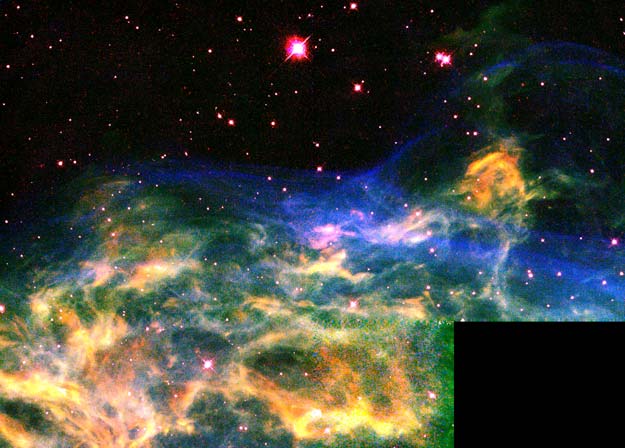Explanation: The Crescent Nebula is a rapidly expanding shell of gas surrounding a dying star. In this recently released image by the Hubble Space Telescope, a bright dynamic part of the nebula three light-years across is shown in representative color. The Crescent Nebula began to form about 250,000 years ago as central Wolf-Rayet star WR 136 began to shed its outer envelope in a strong stellar wind, expelling the equivalent of our Sun's mass every 10,000 years. This wind has been impacting surrounding interstellar gas, compacting it into a series of complex shells, and lighting it up. The Crescent Nebula, also known as NGC 6888, lies about 4,700 light-years away in the constellation of Cygnus and can only be seen through a telescope. Star WR 136 will probably undergo a supernova explosion sometime in the next million years.
1999 2000 2001 2002 2003 2004 2005 2006 2007 2008 2009 2010 2011 2012 2013 2014 2015 2016 2017 2018 2019 2020 2021 2022 2023 2024 2025 |
Yanvar' Fevral' Mart Aprel' Mai Iyun' Iyul' Avgust Sentyabr' Oktyabr' Noyabr' Dekabr' |
NASA Web Site Statements, Warnings, and Disclaimers
NASA Official: Jay Norris. Specific rights apply.
A service of: LHEA at NASA / GSFC
& Michigan Tech. U.
|
Publikacii s klyuchevymi slovami:
nebula - spiral'naya galaktika - Wolf-Rayet star - Crescent Nebula - NGC 6888 - karlikovaya galaktika - polumesyac - zvezdy Vol'fa-Raie - tumannost'
Publikacii so slovami: nebula - spiral'naya galaktika - Wolf-Rayet star - Crescent Nebula - NGC 6888 - karlikovaya galaktika - polumesyac - zvezdy Vol'fa-Raie - tumannost' | |
Sm. takzhe:
Vse publikacii na tu zhe temu >> | |
